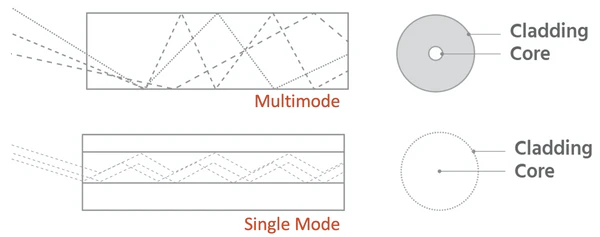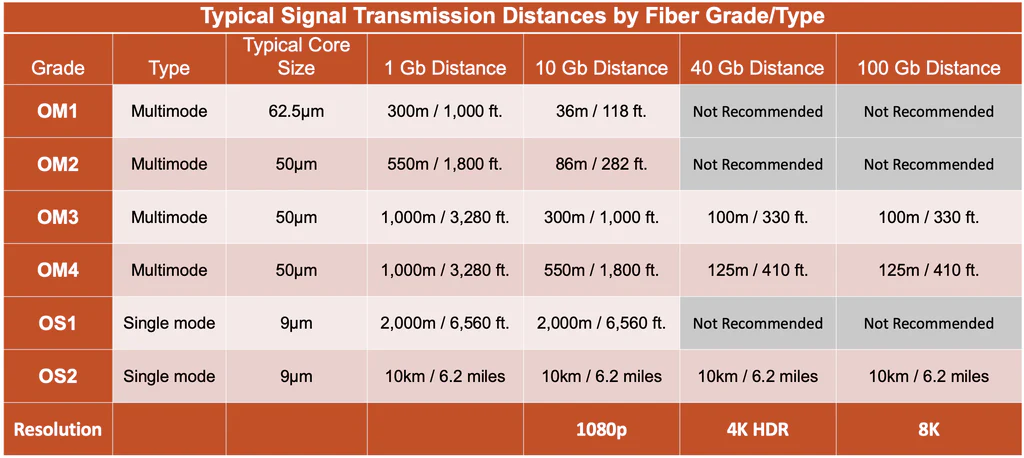

 Knowledge Base +
Knowledge Base +  2023.12.08
2023.12.08No, it is not recommended to use multimode connectors on single mode fiber. Single mode and multimode fibers have different core diameters and operate at different wavelengths, so using the wrong connector can lead to signal loss, high reflection, and poor performance. It is important to use the appropriate connectors for each type of fiber to ensure reliable and efficient optical communication.
Single Mode vs. Multimode Fiber... What's the Difference?
Differences in Construction
First the basics.... single mode fiber is designed to propagate a single light mode whereas multimode supports multiple simultaneous light modes. This difference impacts bandwidth, signal transmission distance and signal stability which we'll explore later.
Additionally, single mode and multimode cables are built differently. The optical core in a single mode cable is 9µm and the optical core in a modern multimode cable is 50µm, though older fiber cables (specifically OM1 rated cables) features a 62.5µm core.

The smaller core size in single mode leads to lower attenuation and therefore longer transmission distances and higher bandwidths. The physics are straight forward: a smaller pipe means less signal reflection.

Differences in Bandwidth
If bandwidth is important to you -- and it should be -- single mode is the clear winner. Single mode cables support brighter, more power light sources with lower attenuation. Plus, a single light mode provides theoretically unlimited bandwidth.
Multimode, on the other hand, relies on the transmission of multiple light modes with less brightness and higher attenuation. This caps the bandwidth and leads to five grades of multimode fiber each with difference bandwidth and distance capabilities. The industry generally ranks the cable and network electronics as follows:

Differences in Distance
Fiber transmission distance is largely dependent on the electronics and their light output, but in practice we find single mode also outperforms multimode. Single mode fiber supports short distance transmission and long distance transmission regardless of signal bandwidth and/or resolution (such as 1080p, 4K and 8K video). Most electronics will transmit up to 10km (6.2 miles) over a standard single mode cable.
Multimode, on the other hand, has a much shorter maximum transmission distance that's affected by cable grade as indicated in the above chart. We typically find the max distance between 300m - 550m (1,000 - 1,800 feet).
Differences in Cost
Given the clear advantages of single mode fiber as indicated above, you'd think single mode cables would be more expensive than multimode cables. And that's surprisingly not the case.
Single mode fiber is more efficient to manufacture, leading to an average of 30% savings over multimode fiber.
The catch is single mode electronics tend to cost more due to stronger light sources and more intricate optical processors. The actual cost varies between device and manufacturer; however, 30% tends to be the average cost difference.
Subscribe to the newsletter
for all the latest updates.
2-5# Building, Tongfuyu Industrial Zone, Aiqun Road, Shiyan Street, Baoan District, Shenzhen. China
